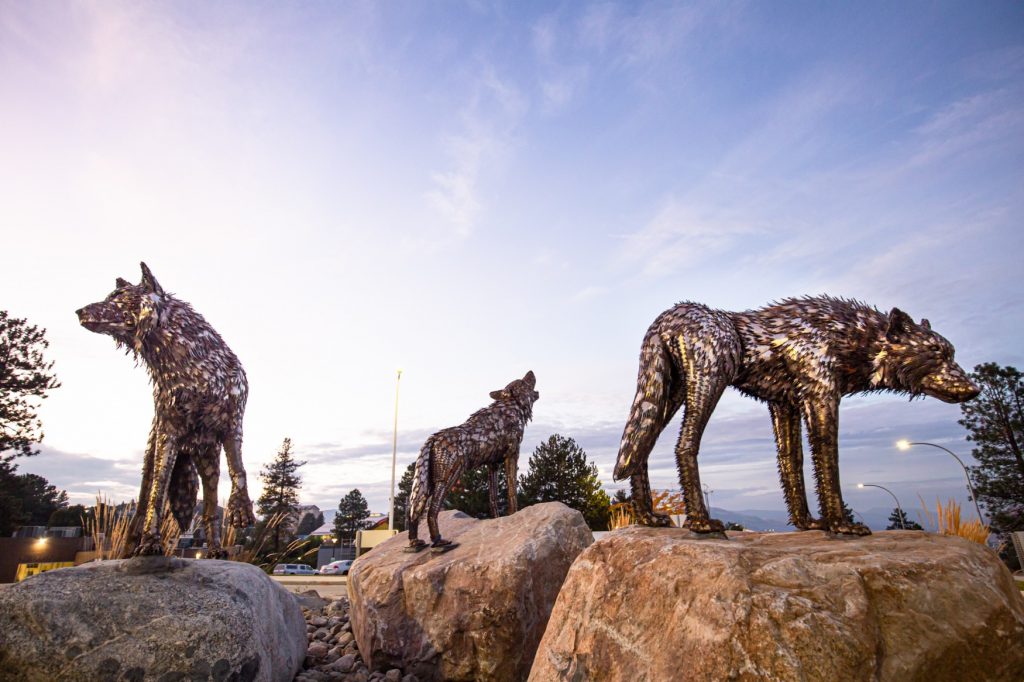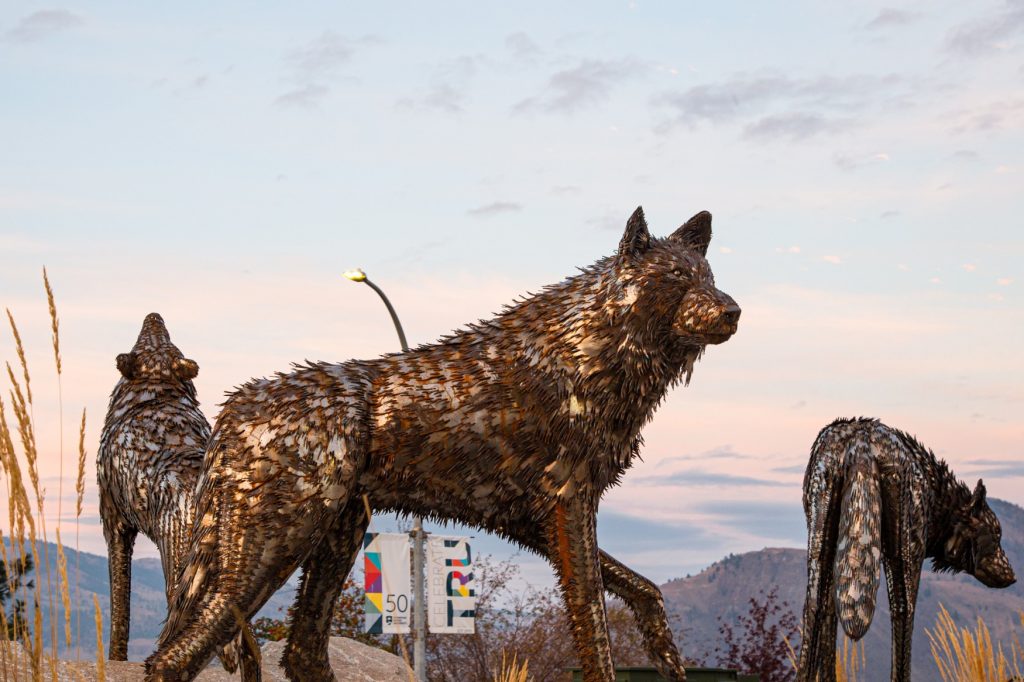Each forged of hundreds of pieces of hand-cut steel fur, the latest public art installation at TRU’s Kamloops campus is a legacy to the institution’s first 50 years.
These sculptures are the latest to join a growing gallery of public art on the TRU campus, located on the ancestral lands of the Tk’emlúps te Secwépemc. From afar, each wolf’s silhouette stands alert and poised. Closer up, their features become uniquely cunning and fierce. Meet Mélemst̓ye.
In Secwépemc oral history, the wolf—’Mélemst̓ye’ in local Secwepemctsín dialect—teaches people to hunt and the important qualities a hunter needs to be successful.
The same qualities that make a successful hunter—patience, vigilance, alertness, teamwork and an understanding of the environment, among others—are also important for a successful student. Like the hunter, the student must devise a strategy to reach their end goal.

But to be a good teacher and pass on this knowledge, Mélemst̓ye requires committed students. So it’s fitting that these three wolves join Sk’elép (Coyote), a teacher in his own right, on the TRU campus.
TRU President Brett Fairbairn hopes the community will find some inspiration in this 50th anniversary installation, recognizing a need to celebrate where we’ve been, while acknowledging the difficulties we face today and where we need to go in the future.
“Even though the format for our celebration is different than what we had anticipated, it remains important for TRU to celebrate and reflect upon the past 50 years and the next 50 years ahead. We also acknowledge that Thompson Rivers University is not the first community of researchers, teachers and learners on these lands,” says Fairbairn.
Artist Braden Kiefiuk lives in Armstrong, BC, and he worked with landscape architect L.A. West Associates to achieve a sense of movement while circling the new roundabout where his sculptures reside. Kiefiuk uses round rod armatures to sculpt the shapes of his specialty—the iconic animals of North America—and then finishes them with hand-cut and formed pieces of steel that are left unpainted and exposed to the elements. All the hammer marks and welds remain visible in his work.
“I tried to capture movement and the beautiful yet ominous look of the wolf,” Kiefiuk adds.
The wolves are uniquely angled on locally sourced boulders and drought-resistant native plants selected by L.A. West to match the surrounding Kamloops hillsides. They’re constructed from a special Corten steel made to show a full rust patina while never corroding, and as a nod to the long history of the institution’s School of Trades and Technology.
The sculptures prowl a commanding location on University Drive, overlooking the city, rivers and hills on one side and a newly completed nursing building and pedestrian bypass on the other. TRU Vice-President University Relations Brian Daly sees their addition as part of an ongoing effort to include public works of art across campus by local artists that teach us about local culture and history.
“The university is a centre for learning, but it’s also a place where culture and ideas are fostered, so public art is a natural extension of that. Works such as these wolves not only create a sense of place on campus, but they give us a sense of the place and people who live around us,” says Daly.
You can find the wolves just inside the University Drive gates. And if it’s been a while since you’ve visited, take a walk around. We’ve come a long way in 50 years. Learn more at tru.ca/50



